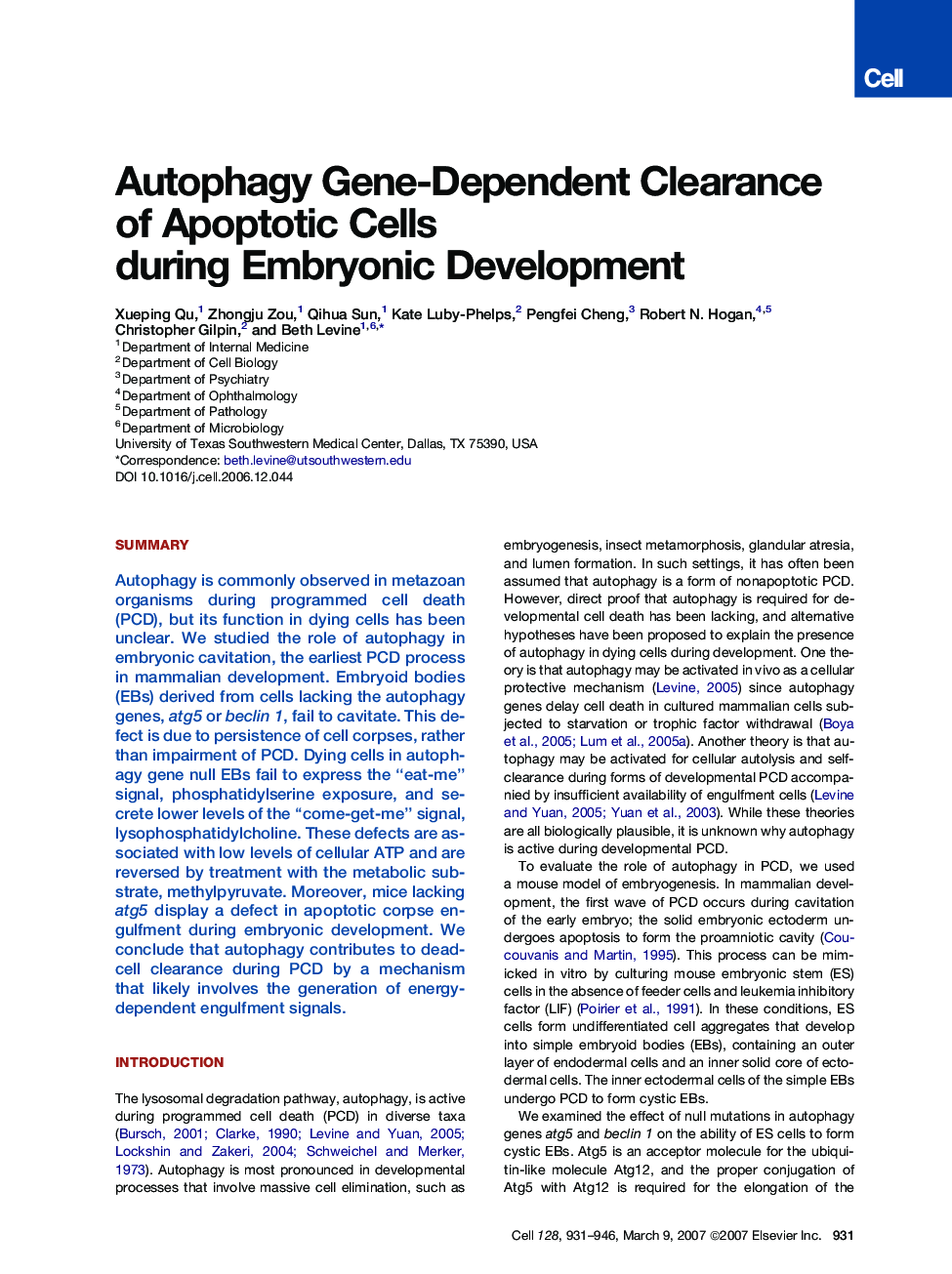| Article ID | Journal | Published Year | Pages | File Type |
|---|---|---|---|---|
| 2037992 | Cell | 2007 | 16 Pages |
SummaryAutophagy is commonly observed in metazoan organisms during programmed cell death (PCD), but its function in dying cells has been unclear. We studied the role of autophagy in embryonic cavitation, the earliest PCD process in mammalian development. Embryoid bodies (EBs) derived from cells lacking the autophagy genes, atg5 or beclin 1, fail to cavitate. This defect is due to persistence of cell corpses, rather than impairment of PCD. Dying cells in autophagy gene null EBs fail to express the “eat-me” signal, phosphatidylserine exposure, and secrete lower levels of the “come-get-me” signal, lysophosphatidylcholine. These defects are associated with low levels of cellular ATP and are reversed by treatment with the metabolic substrate, methylpyruvate. Moreover, mice lacking atg5 display a defect in apoptotic corpse engulfment during embryonic development. We conclude that autophagy contributes to dead-cell clearance during PCD by a mechanism that likely involves the generation of energy-dependent engulfment signals.
